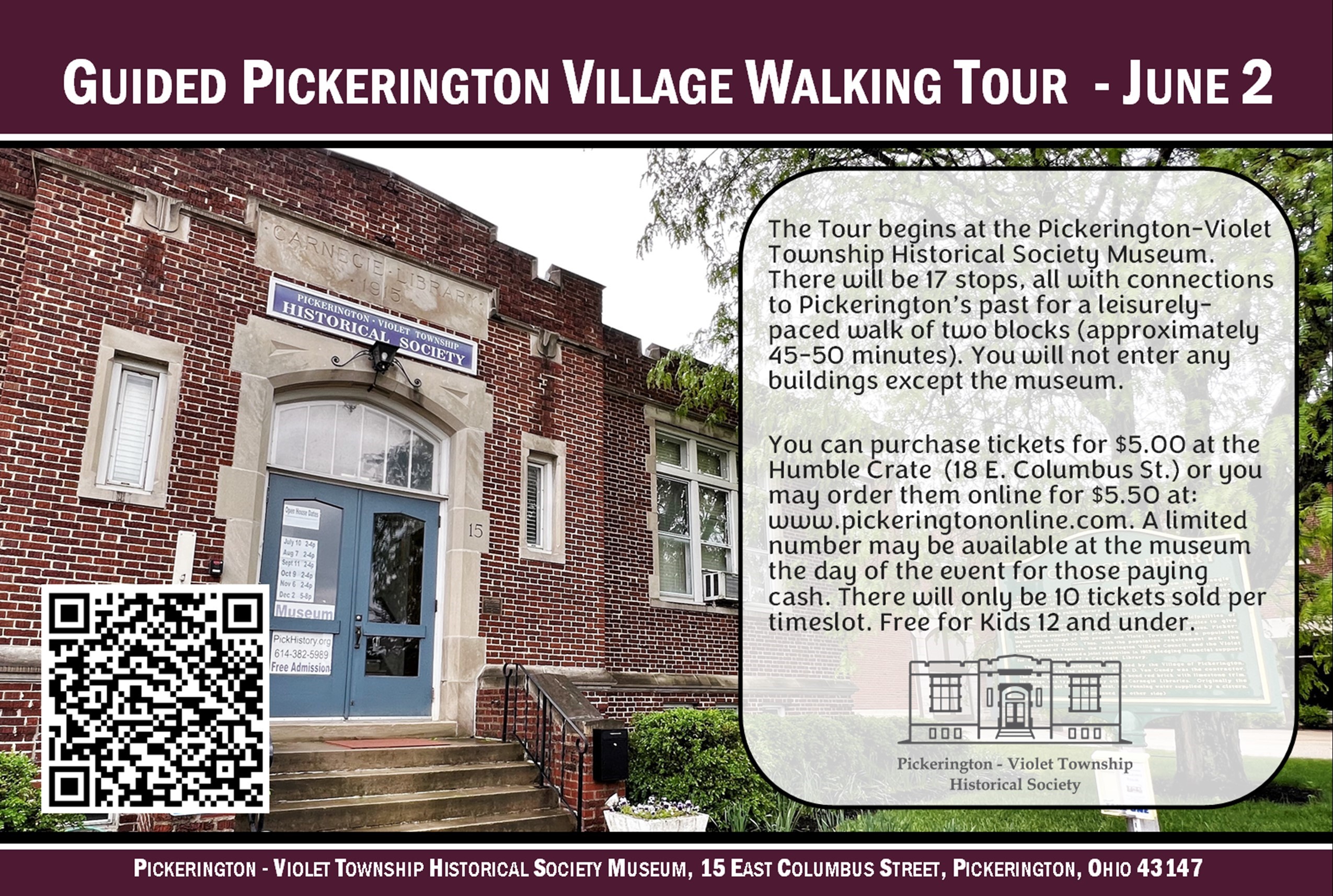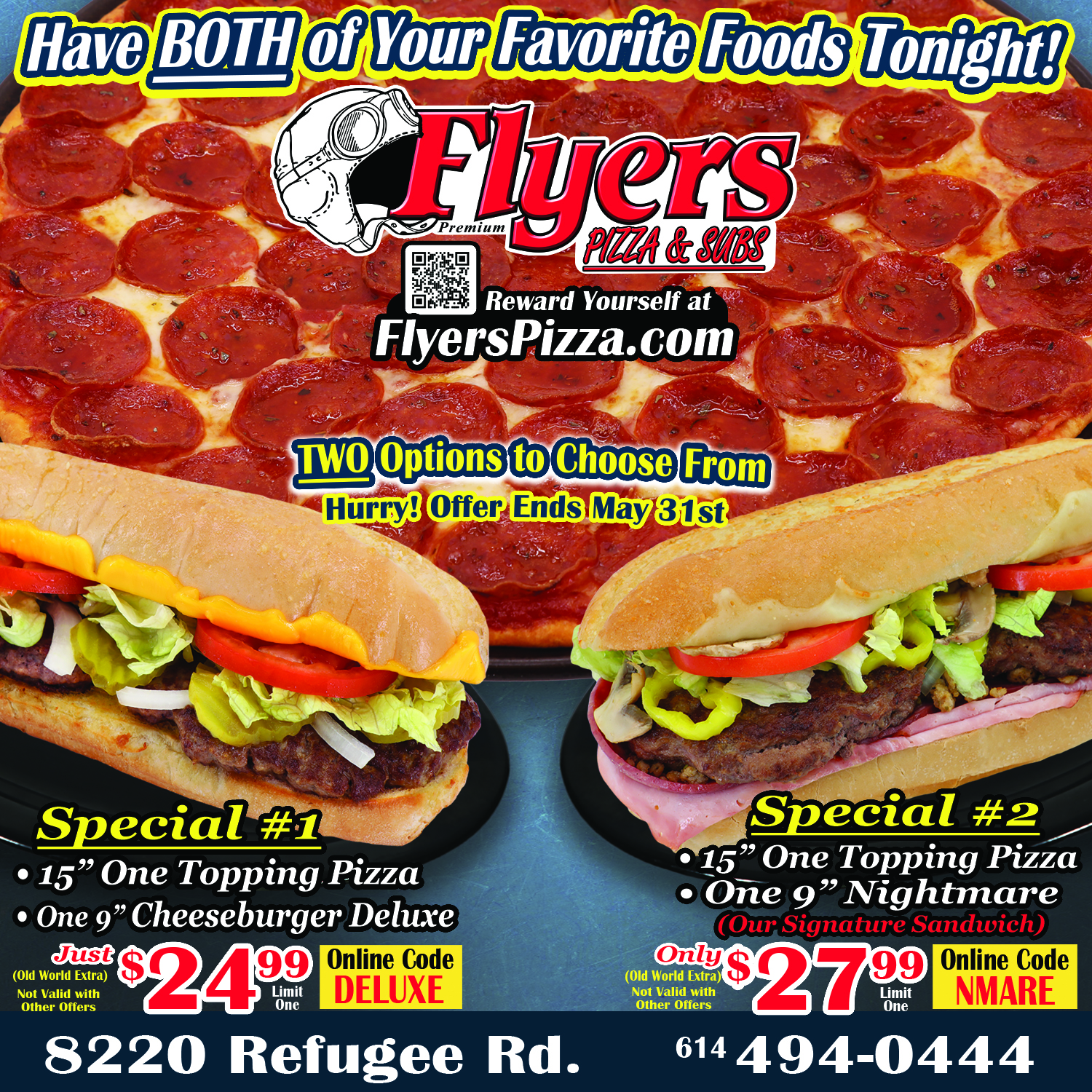
January 20, 2023
Story contributed by Kevin Wetherell
The Wetherell Dairy started on April 15, 1928, on County Road 20 (Pickerington Road), between Busey and Basil Western Roads. It was a family business run by Ray E. and Eula Wetherell, along with their five children: daughter Evelyn and sons Robert, Edwin, Ray Jr. and Jim.
Eventually the enterprise grew to include 350 acres and 125 head of milking Jersey cows and young stock. The raw milk was bottled by hand in Columbus Milk Distributors Association (CMDA) glass bottles, and the cows were milked by hand.
It required a lot of hay to meet the requirements of the dairy cattle. Some 90 acres of land were planted in alfalfa-ladino-brome (a mix of hay and corn), in addition to 30 acres of permanent bluegrass pasture. Two silos held 400 tons of the mixed hay and corn. Putting up the hay took place three times each summer.

In addition to their own cattle, the Wetherell Dairy distributed milk from 30 other dairy farms, including Graceland Farm located in Pickerington. Most of the milk went to market as Jersey cream, cottage cheese and chocolate milk.
In 1931, pasteurized milk came on the market, still with the cream at the top. You heated the milk in a vat to 143-degrees then let it sit at that temperature for 30 minutes to kill the bacteria. Then, you used rapid cooling to bring it down to 30-degrees.
Pasteurized milk was followed by homogenized milk, which is the product sold today. This processing method breaks up the butter fat particles then distributes them evenly throughout the milk. Without it, the cream will rise to the top.
In 1931, Wetherell milk was delivered to stores in Pickerington, Reynoldsburg, Canal Winchester, Columbus and surrounding areas. As more routes were added, more workers were needed. Eventually 15 people were employed at the dairy in addition to the family members.
Initially, all the milk was bottled in glass bottles. Milk was not put into cartons until 1946-47 when vending machines became popular. Wetherell did not use cartons for school milk until 1955. Initially, cartons were used in grocery stores and vending machines located at places including the Lockbourne Air Base and the Ohio State Fair Grounds. Wetherell Dairy serviced about 100 machines which offered chocolate milk, white milk and orange drink.

Image provided by Kevin Wetherell
By the time that Wetherell Dairy was sold to Harmony Farms Inc. in April 1971, it had amassed 20 Divco Milk trucks, and operated five wholesale routes, nine retail routes and two routes to area schools.
Interesting Facts About the Farm:
- The land was once owned by Abraham Pickering, the founder of Pickerington.
- In the early 1900’s, the farm was an apple and pear orchard.
- There used to be a small stone house near the back of the property.
- Dennis Kelly, owner of the Capital City Dairy Company in Columbus, Ohio, purchased the property in the early 1900s as a retreat away from city. His company produced “Butterine” which today is known as margarine.
- In March of 1924, Ray Wetherell purchased the property from Kelly. A team of horses, American Hampshire hogs and some farm equipment were included in the purchase agreement.
- Sheep were the first animals raised on the property.
- Chickens were the next venture. Four brooder houses were built. Ray had 5,000 chickens until the market got flooded with chickens. Then, they were sold and trucked off to Pennsylvania.
- American Poland China hogs were purchased in 1926.
- April 15, 1928, Ray bought Gus Stemen’s small herd of 20 Jersey cows and his milking outfit. The Wetherell family chopped down the orchard because the fruit made the cows gassy.

- In 1928 the dairy didn’t have any milking or bottling machines. Raw milk was poured into a vat. It then flowed over water-chilled coils then into a 10-gallon milk can. A corner of the milk plant was built to hold cold water. The milk cans were sat in that water to keep cool. Milk was poured from that can into another can with a spigot. Bottles which had been hand washed and rinsed were filled and set aside to be “topped off” and then capped.
- The cap was a flat cardboard disk that was pressed into the neck ring of the round bottle. Milk not bottled was separated and the cream was sold to the Pickerington Creamery where butter was made. Ray Sr. would load the wooden milk crates full of the bottled milk in the Model T truck and deliver to residents and nearby stores. This process was done twice a day with the help of Ray, Eula and their daughter Evelyn.
- Evelyn was assigned to hand-milk cows each morning and evening. A jelly sandwich was always waiting upon arrival home from school. If Evelyn didn’t get the cows milked in time, she missed the bus and rode to school with her father Ray on his milk route.
- Making hay was a busy time. A team of horses pulled a wagon of loose hay up the embankment into the barn. Horses were unhooked from the wagon and a “double tree” was used to attach the lines for the pulley to the hay fork which lifted loose hay to the mow.
- Homes located along Busey Road were the family members’ homes that backed up to the lake on the dairy.
- In 1948, the main barn and milk truck garage were built.
- In 1951, they milked 54 Jersey cows with an electric-milking machine, called “De Lavals”. It took an hour and fifteen minutes each morning and evening to milk 54 cows.
- They bottled approximately 1,200 gallons of milk a day.
- In 1952, the original farmhouse caught fire.
- In 1953, the new house was built by Waldo E. Wollam.
- In July 1954, Wetherell Dairy hosted the “Sate Picnic” which was a gathering of Jersey cattle breeders from all over Ohio. More than 400 people attended.

Photo provided by Kevin Wetherell
- Aug 7, 1959, a 264-ft well with a 10-inch casing was completed on the farm which pumped 100 gallons a minute.
- In 1968. Mayor M.E. Sensenbrenner awards the key to the city to Wetherell Dairy’s prized jersey cow, “Jean”.
- Wetherell introduced All-Jersey milk in eleven Big Bear Supermarket in Columbus. Introduction of the milk in these super-markets was spear-headed by a well-planned advertising program with a large ad in the major Columbus newspapers on Thursday of each week. Coinciding with this advertising program were special displays at two stores each week over a five-week period.
Two small Jersey calves were attractively displayed in a pen in front of stores and pamphlets on All-Jersey milk were handed to the customers as they went inside. Everyone was invited to try a free sample of Wetherell’s All- Jersey milk at the dairy counter in the store. All-Jersey in half gallon, quart and pint cartons were displayed in the dairy section. An attractive saleslady, who was a real specialist, handed out small cups of ice cold Wetherell Dairy All-Jersey milk from a glass dispenser and encouraged shoppers to purchase Wetherell’s delicious All-Jersey milk. - Wetherell’s All-Jersey milk grew to sell an average of 7,000 quarts per week in eleven Big Bear stores.
- Wetherell Dairy had a dairy store in Reynoldsburg at 7111 East Main Street.
- Wetherell Dairy as a pioneer for the milk industry in Ohio. They were the first to become registered All-Jersey and the first to have their milk in supermarket stores (Big Bear).
- Products the dairy offered were white and chocolate milk, coffee cream, butter milk, half & half, eggnog, cottage cheese, orange aid and fruit punch.





























